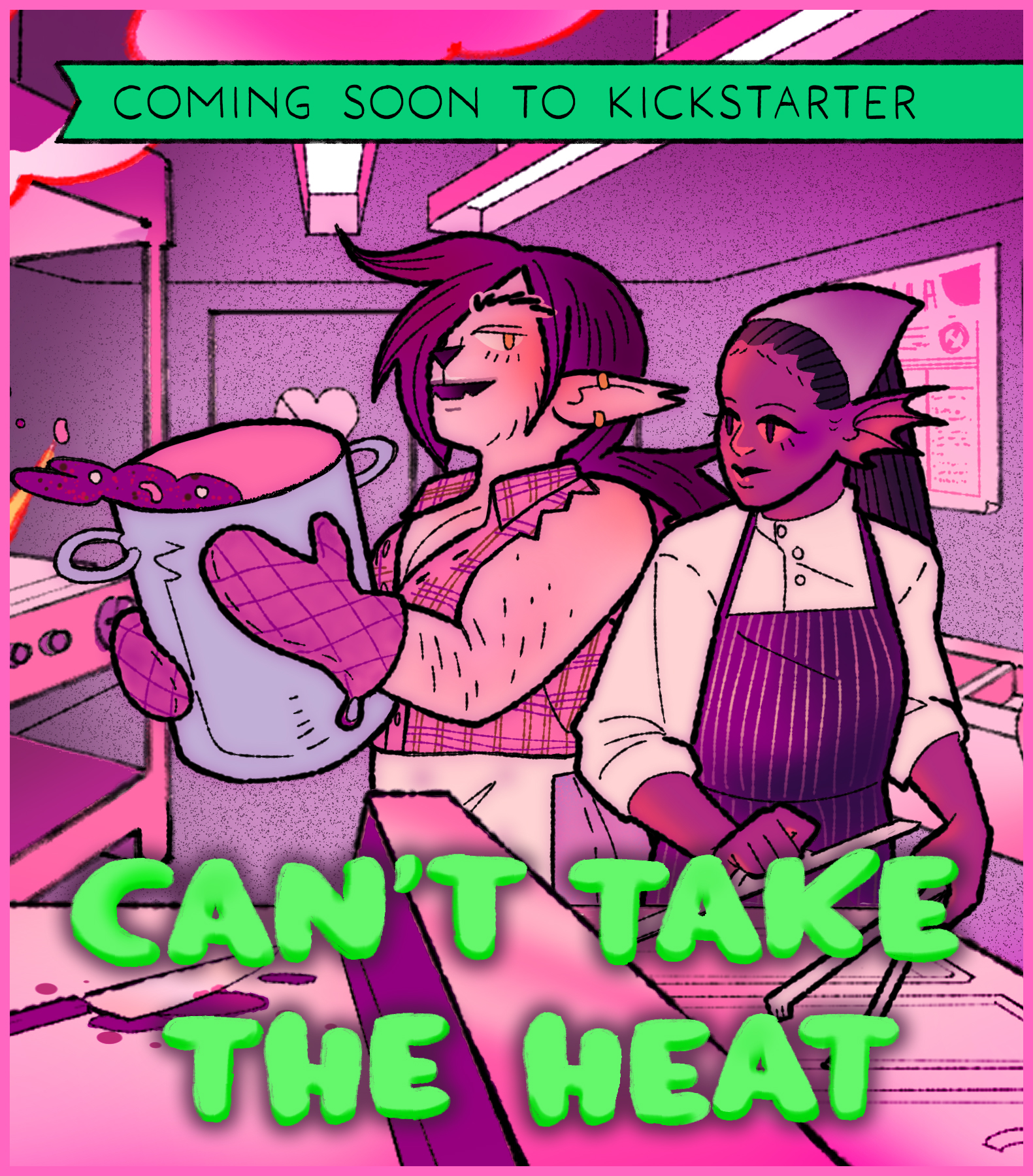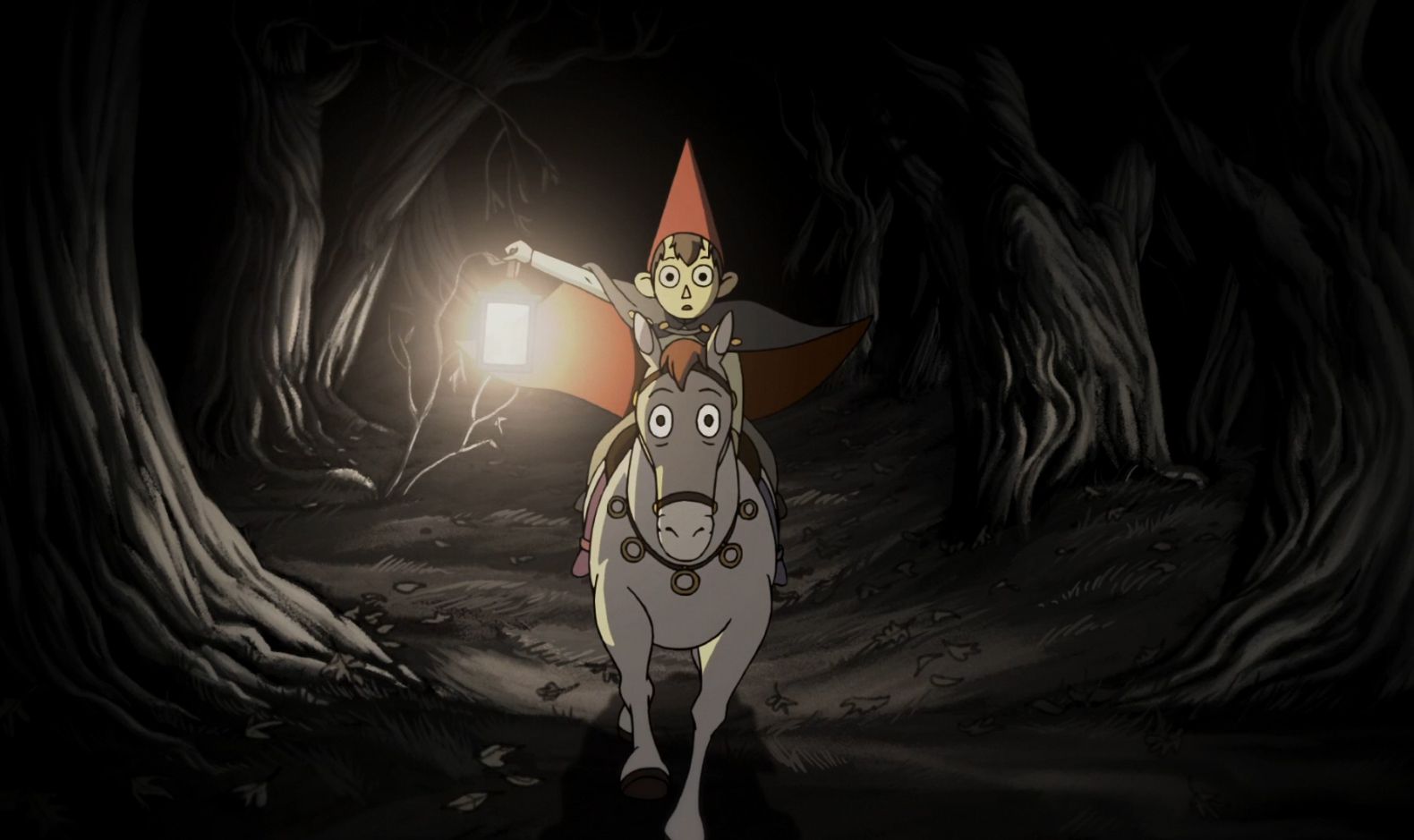
What can Over the Garden Wall teach us about adventure design? The 10 episodes are tight, full of surprises, and effortlessly entertaining. For the most part, they seem to share a foundational structure that we can pull out of the show and apply to roleplaying games. You can’t plan a “story” in an RPG, but that doesn’t mean you can’t set something up to be fun and engaging for everyone at the table.
If you’ve seen the show, I’ll be preaching to the choir. If you haven’t, I highly recommend it—each episode is about 10 minutes and it’s a breeze to get through. There will be spoilers ahead.
The Foundations
From the show, we can extract four main structural supports that translate over well to an RPG adventure. These are:
- A familiar, recognizable situation.
- A mystery, question, or strange unexplained circumstance.
- A twist on expectations.
- A non-reliance on violence.
Let’s break down each of them.
A Familiar Situation
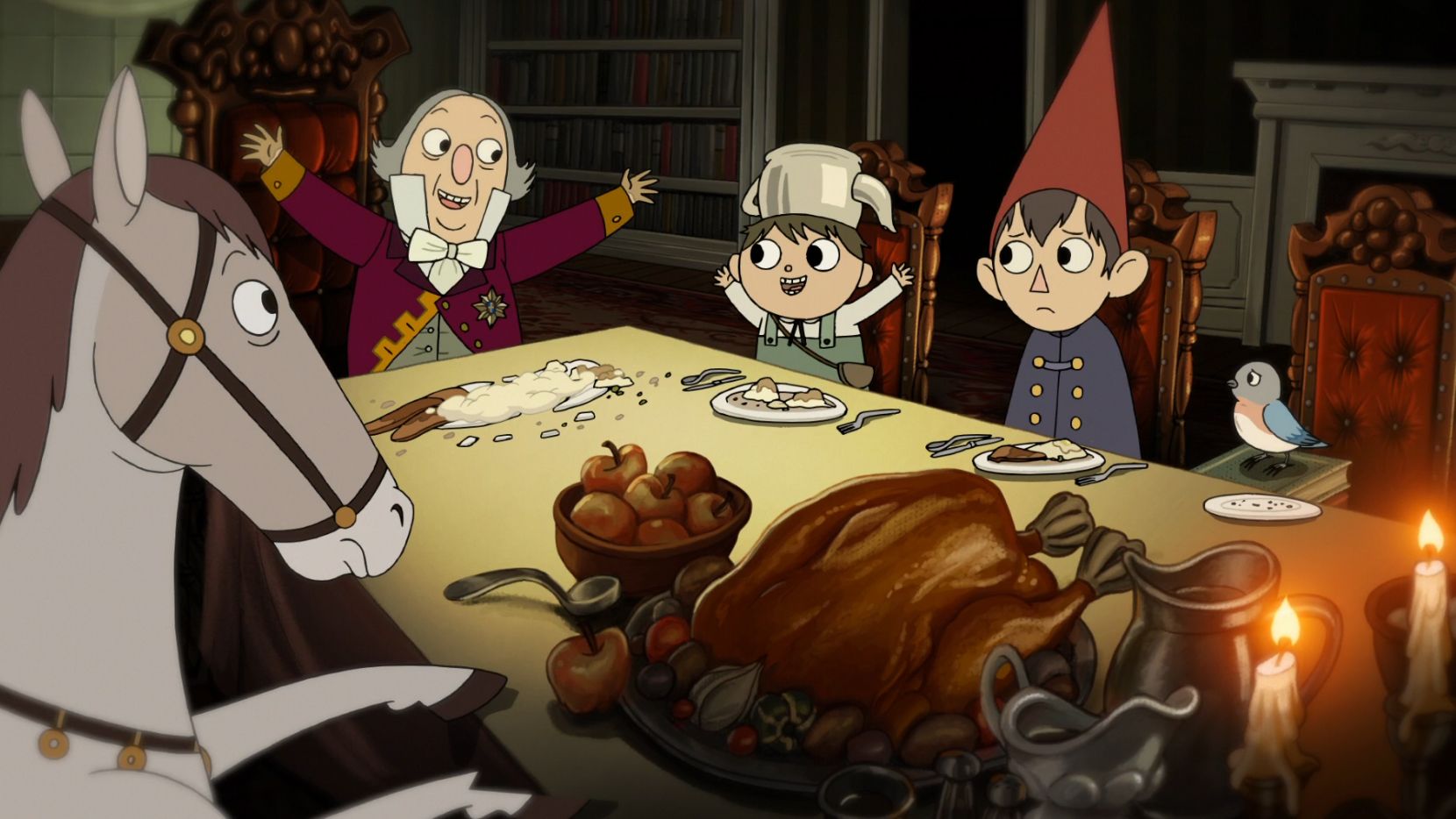
When you’re introducing a new adventure to the group, they need to get up to speed with the situation as fast as possible. The less “fuzziness” in the concept they have, the better. That’s not to say that a situation has to be straight-forward or simple, but it does need to be understandable. The easiest way to do this is to introduce a “familiar” situation that puts everyone on the same page. Every group has different touchpoints, so this is a personal touch.
As a rule of thumb, the more standard and recognizable the situation is, the more twists, mysteries, and breaking of expectations you can include. Let’s pick three familiar situations for examples in this: a bank robbery, crossing a bridge, and delivering a letter.
The further from “baseline” you make the situation, the more work you’re going to have to put in to get to a point where the players understand all the moving pieces.
Leveraging Mystery
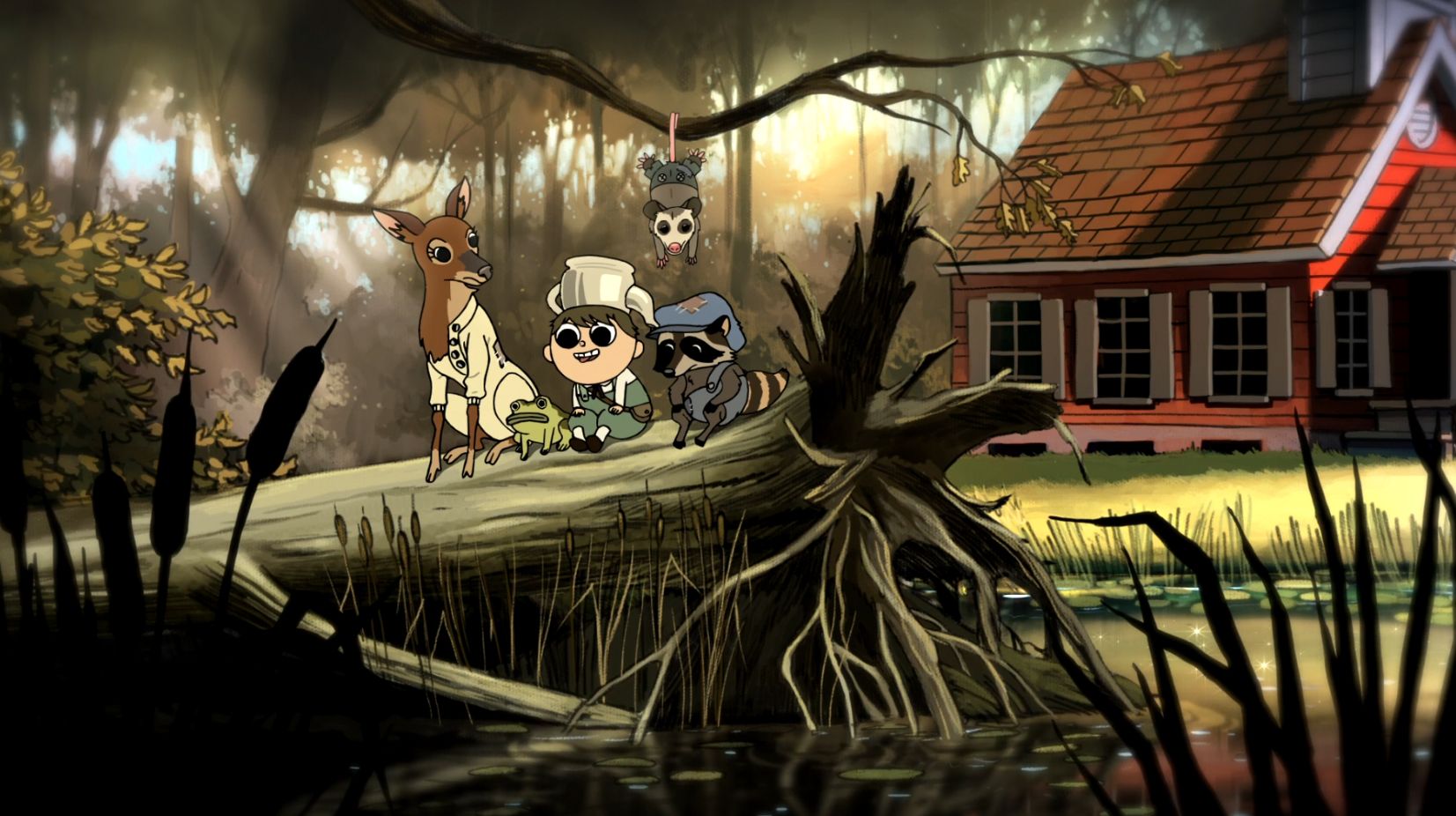
When I talk about mystery, I’m not specifically talking about a crime solving “whodunnit”, but rather questions that the players are going to be asking and trying to figure out while playing the adventure. Known unknowns draw attention. We have a natural desire to try and turn them into known knowns. The more uncertainty you introduce into your situation, the more set up you have for the twist.
There should be multiple questions in the adventure. Questions come about naturally from the situation, and the more familiar the players are with it, the faster they’ll be able to grasp what the big questions are.
For the bank robbery, the players might be asking:
- Who is guarding the bank?
- What is inside the bank?
- How do we get away with this?
- Why does the person orchestrating this need our help?
For the bridge crossing, they might ask:
- Is the bridge safe?
- Why can’t people cross this bridge?
- Is there anyone underneath the bridge?
- Who or what is guarding the bridge?
For the letter delivery they might ask:
- Who is the letter going to?
- What are the contents of the letter?
- Who is going to try and steal the letter?
- Why does this need to be safe-guarded?”
An Inevitable Twist

The twist is the special sauce dumped and slathered all over your adventure. The twist is what makes it uniquely yours and special. The twist is where you really let your creativity shine.
To create the twist, look at the questions and mysteries the players will be dealing with, and throw out the first five ideas that you have for them. Familiar readers might recognize some similarities to Question-Based Adventure Design, and that’s intentional. These question/answer cycles are a great way to jumpstart and juice your built in idea-generator (brain).
If you’re worried about tropes (and I honestly think you shouldn’t be when it comes to TTRPGs) the twist is the thing that breaks the mold and takes you out of cliché territory.1
Not every question needs a twist. Sometimes the answers are straightforward.
For the bank robbery, the twist might be that anyone walking by one of the bank’s golden mirrors with nefarious intentions in their heart creates a doppelgänger that will attempt to stop them.
For the bridge crossing, the twist might be that the troll underneath it refuses to let people pass until someone can help gather materials, make repairs, and bring out the bridge inspector to make sure it passes code.
For the letter delivery, the twist might be that the letter itself is alive and desires a day of debauchery before it is opened (and ceases to exist).
Non-reliance on Violence
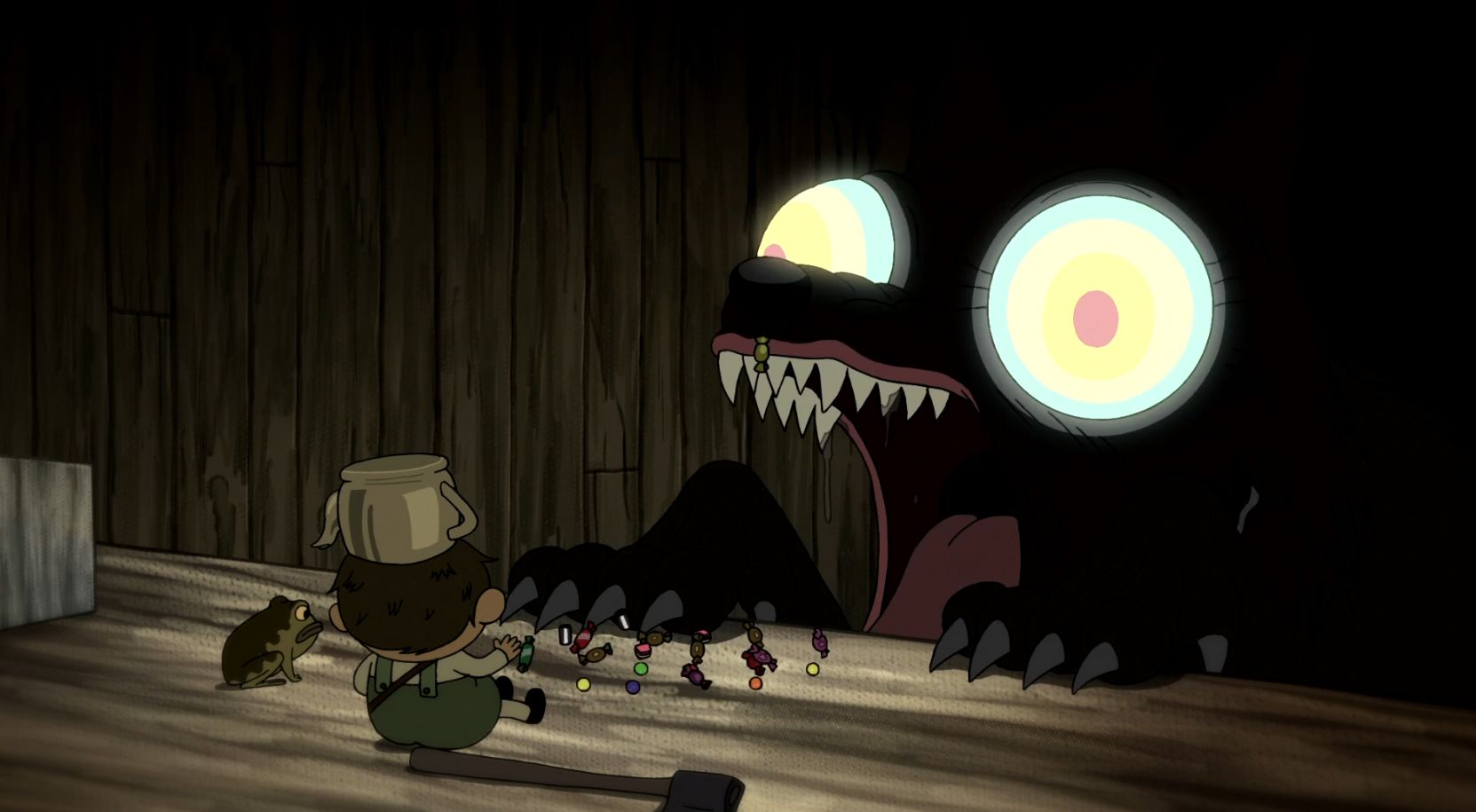
While Over the Garden Wall does have violence, solving the mysteries and problems of each adventure never relies on a violent tactic2.
Even dangerous “encounters” can have multiple open-ended ways to be solved, such as extinguishing the lantern that contains a bad guy’s soul, using a bell to excise a spirit instead of fighting it, or squeezing out a demon turtle from a creature to return it to its friendly good-boy state.
For the bank robbery, the doppelgängers are willing to let the robbery go through for a price—the characters must break the golden mirror that binds them to this place.
For the bridge crossing, the troll is non-violent. He just wants to get the bridge fixed.
Likewise with the letter delivery: nobody is coming to steal the letter, the danger in the adventure lies in protecting it from itself.
An Example: Pottsfield
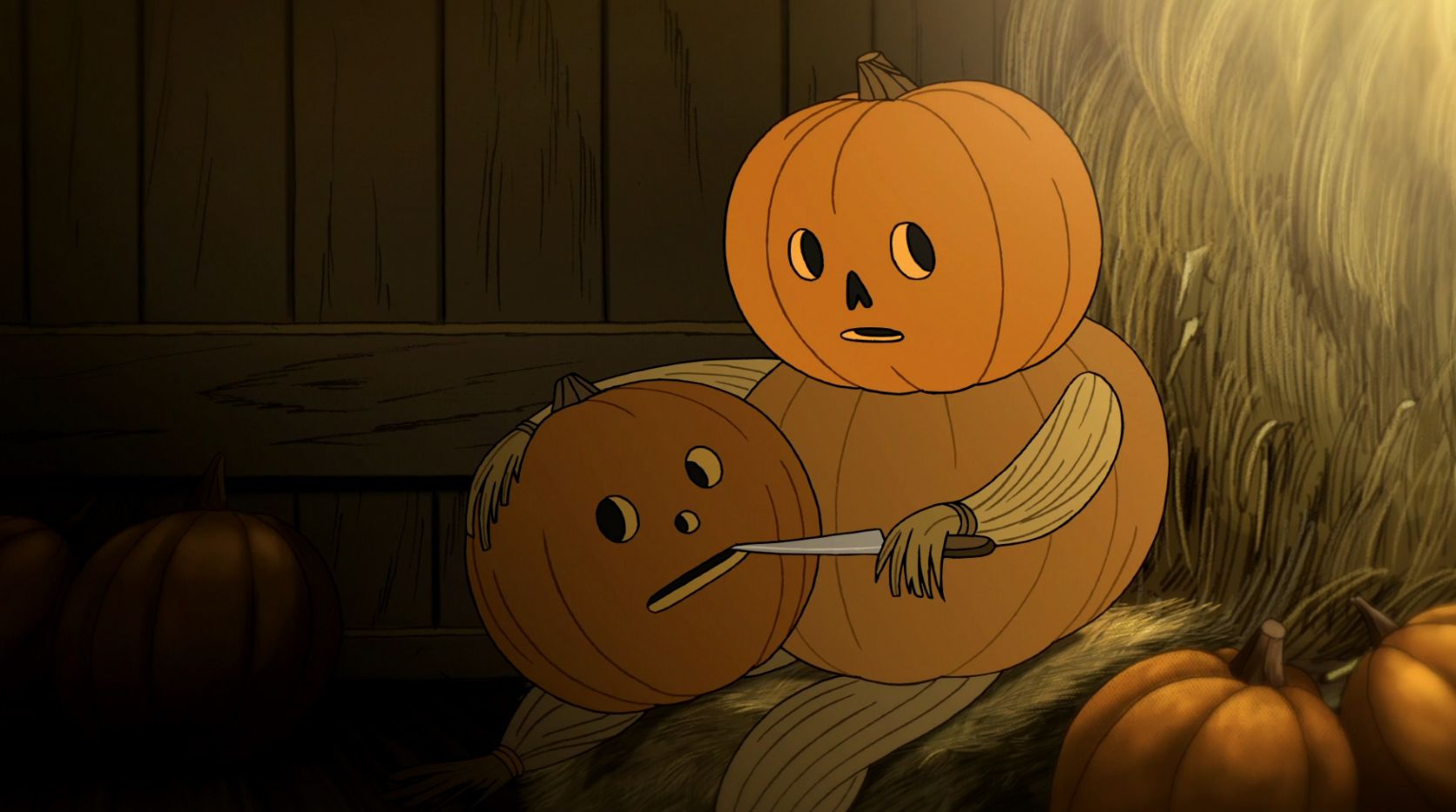
First up, let’s look at our recognizable and familiar situation: we have an abandoned creepy town, a creepy dance and ritual, and cult-like worship.
For our questions and mysteries:
- Why are they all wearing pumpkins?
- What’s underneath the pumpkins?
- Why are they all in the barn?
- Who are they worshipping, and what kind of ritual is this?
For our twists: the pumpkins just want the characters to do some hard labor for them. They discover skeletons in the ground, but they weren’t killed by the folks of Pottsfield—they are the folks of Pottsfield, ready to return to unlife and wear their pumpkin suits.
For the non-violence: the characters try to run away and escape, but are caught. After they do their hard labor, they plan to break out and flee, but the solution to the problem is that if they just put in their required time, the people of Pottsfield will let them go unharmed.
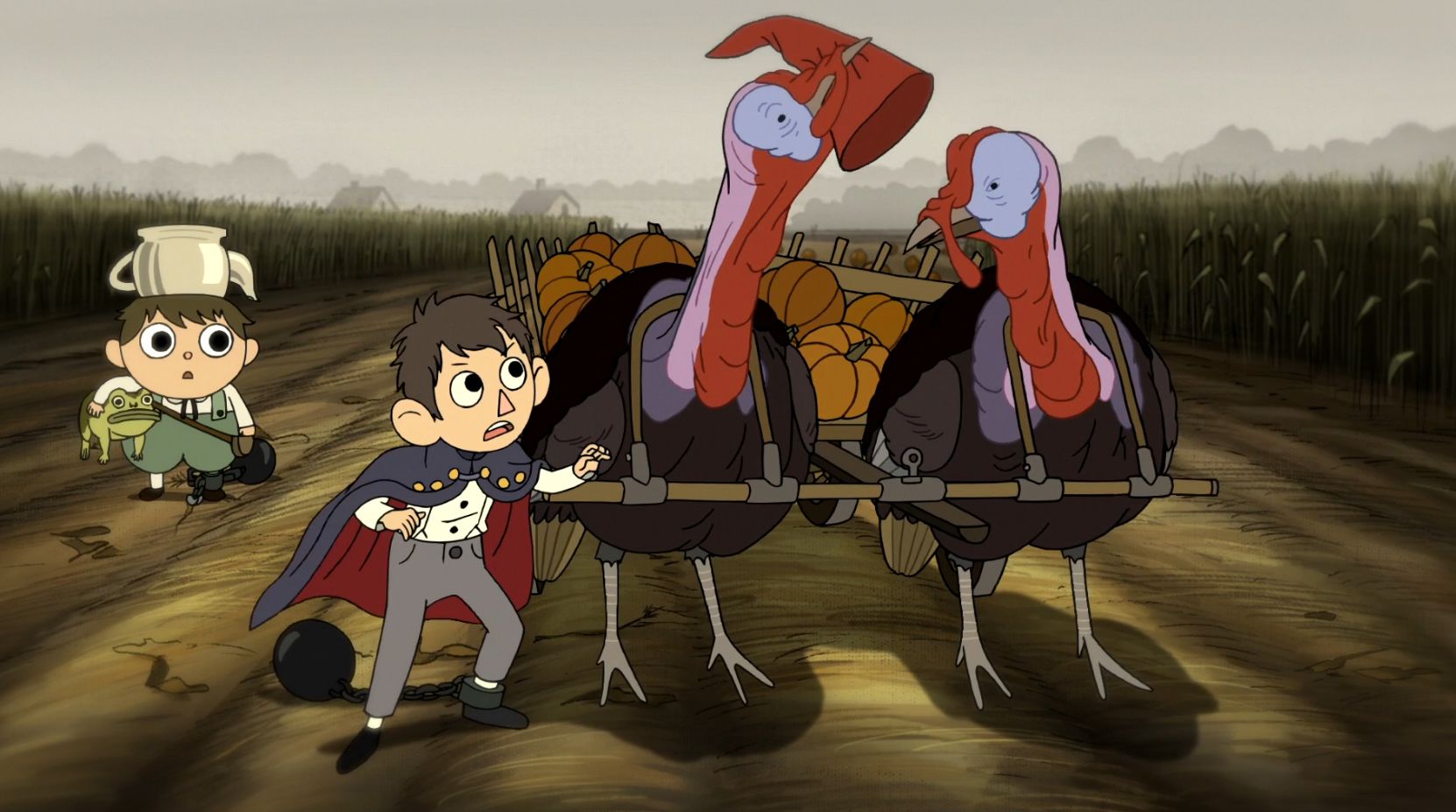
An Example: The Ringing of the Bell
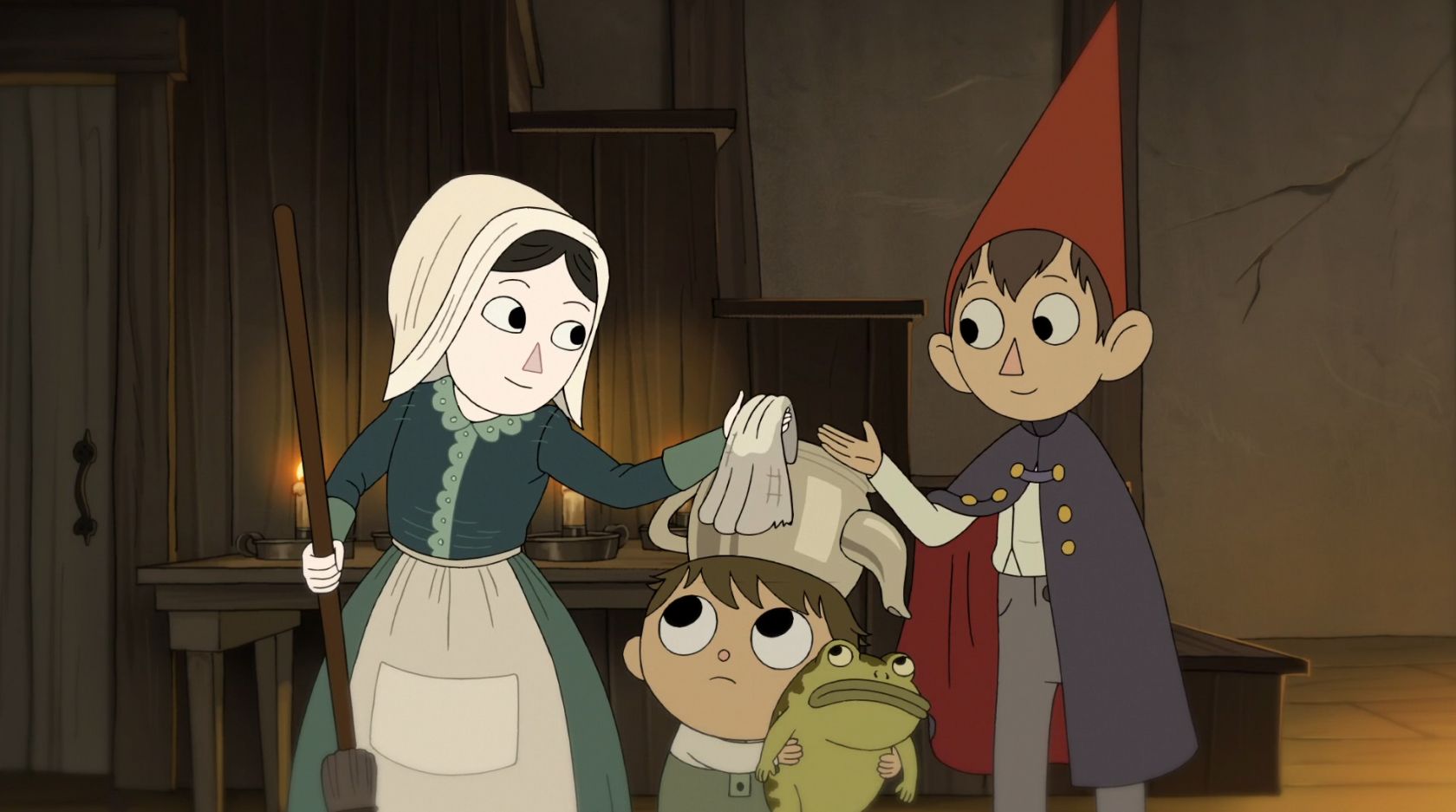
For our recognizable and familiar situation: two sisters, one a dangerous witch and the other her helpless captive, live in a cabin together.
For our questions and mysteries:
- How does the witch keep her sister here?
- What will the witch do if she catches us?
- How can we free the innocent sister?
- How can we break the spell of the magic bell?
For our twists: the “evil” sister isn’t evil while the “good” one is. The witch is keeping her from hurting others.
For the non-violence: fighting the evil sister after she attacks seems hopeless. But the bell can be used to banish the spirit inside of her and free her from its control.
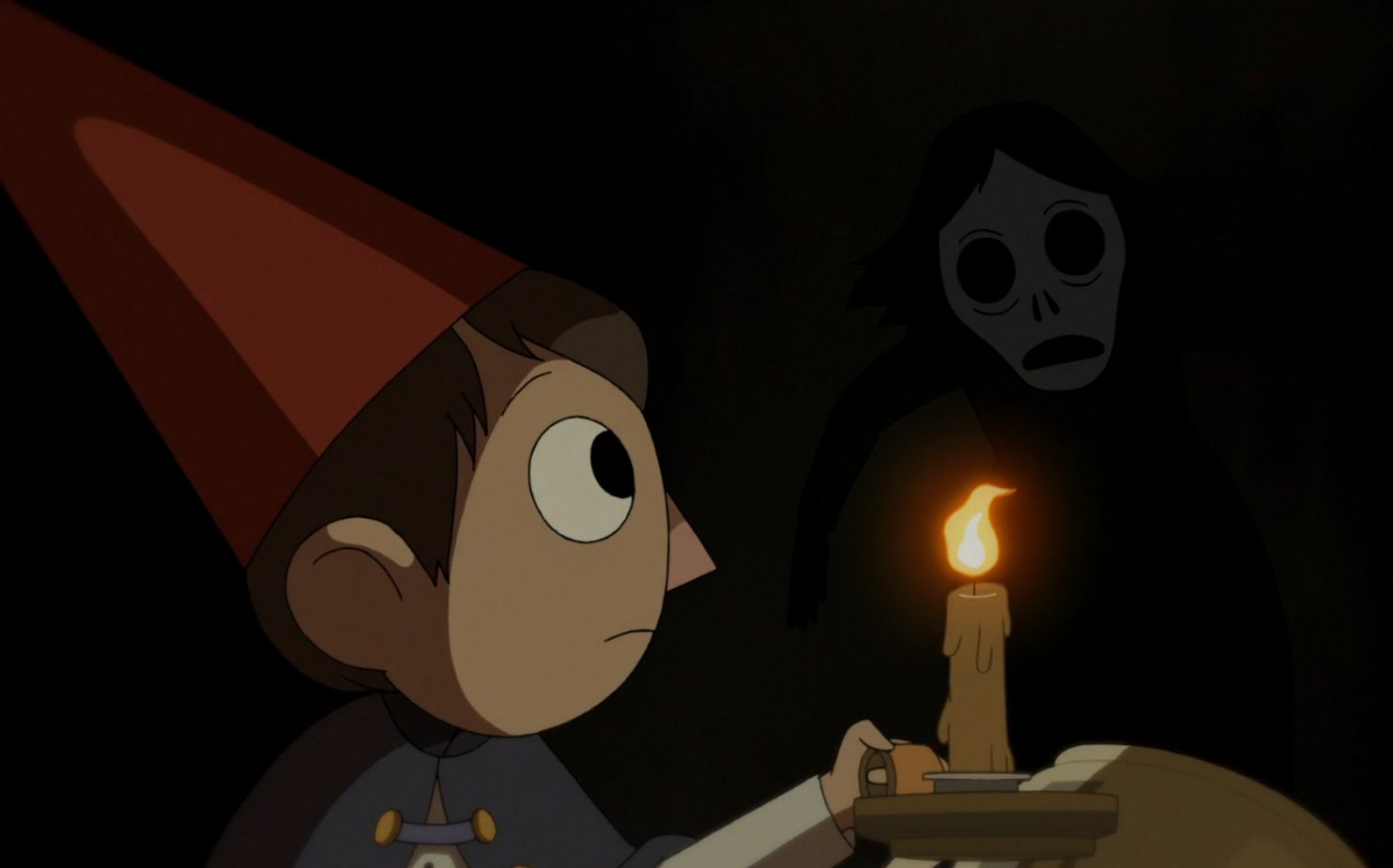
Bonus Section: Capturing The Vibes
Okay, but what if you want to play in a setting reminiscent of Over the Garden Wall too? What kind of steps can you take to achieve that? Most of the following insights come from the powerful mind of my lover and co-conspirator Norn Noszka and not myself. They managed to articulate the setting better than I possibly could.
Time periods should be loose and playful. They jump around often through episodes, never quite letting us get a true feeling for what era the world should be set in. The schoolhouse episode seems very early 20th century and gilded age. The tavern episode feels like it’s somewhere between late 1700s or early 1800s, but then it throws in a curveball by giving the tavern keeper a thick Brooklyn accent. The mansion slots into a similar era, with Writ even mentioning Rococo and Edwardianism. Auntie Whispers leaps all the way back to the 1600s.
There are hints and clues about Wirt and Greg being from more contemporary times. Wirt mentions high school and a marching band, but there’s still plausible deniability all the way up to the flashback episode.
Keep the setting vague and focus on the timeless things. There’s no need to answer specific questions about when, where, and what the place the characters end up are. Instead, lean into the autumn imagery that has persisted over the centuries.
Take the things that make you feel the season’s spirit and find the core of that idea to bring into the game.
Bring the whimsical, but make it spooky. The show employs a great deal of silly whimsical elements, but it does so with an expert hand at twisting them into something a bit horrific at the right time. If everything is silly all the time, things feel off. The same goes if it’s just gut wrenching horror every adventure.
De-emphasize weapons. When Wirt eventually equips himself with the woodsman’s axe, he loses it by the end of the episode. Items and especially any weaponry should feel very “use it and lose it”. Combat, if and when it happens, shouldn’t be to the death unless absolutely necessary.
Conclusion
While this post was inspired by Over the Garden Wall, the advice is general enough that you could use it for all manner of adventures. If you’ve got additional structures that you think I missed, I’d love to hear about it in the comments.
ALSO: Sanctimonious Slimes vs Expired Epicures is the first official adventure for Errant! Delve into the dungeon and face an ennui afflicted medusa, holier-than-thou slime people, and hedonistic skeletons!

Did you enjoy this post? Consider signing up to the mindstorm, my semi-regular newsletter!
